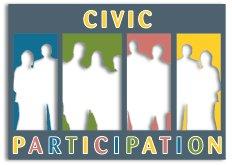The Public Engagement Toolbox
Al Savay, AICP, is community development director for the City of San Carlos and can be reached at asavay@cityofsancarlos.org.
Meaningfully engaging the public requires planners and government officials to develop a public participation toolbox that can be used in a wide variety of situations. Local governments may use several effective approaches, depending on whether the project is an ongoing planning initiative or a public input process.
Traditionally, the public or community project meeting takes place in a large room with rows of chairs facing the front. The city planner or developer presents the plan or project and then opens the meeting to questions. With a controversial project, it’s safe to assume that public concern or distrust has already led to a volatile and adversarial situation. It’s not uncommon to see people shouting at each other, city staff backpedaling to correct inaccurate information, and a few loud voices dominating the forum. In a community meeting in San Carlos some years ago, we found ourselves facing three times the number of people expected, many of whom stood lining the walls, adding to the meeting’s negative tone and general discomfort.
While it’s not always the case, I have often seen the traditional meeting method fail to achieve any meaningful public exchange of information. It pays to be open to new methods of engaging the public.
In San Carlos, we recently tried a somewhat nontraditional community open house for a couple of controversial projects, with great success. In the community open house format, a public meeting room is set up with several separate stations around the perimeter. Each station is staffed by a small group with a specific viewpoint or a specialized area of expertise. General information is also available or displayed on various aspects of the project or initiative. One station may be staffed by a design team, another by city officials and a third by the plan’s proponent or developer. Members of the public can visit each station at their leisure, look at drawings and ask questions of the individuals at the station.
In this intuitive arrangement, people need little prompting to engage in meaningful conversation on a particular topic, and because the discussion is on a more personal level, it’s more likely to be polite, if not cordial. The confrontational aspect of the more traditional presentation and question-and-answer format is removed, and people feel freer to express support for or opposition to a plan or project without the judgment or intimidation of a large crowd. Our most recent community open house, attended by nearly 90 people, was a positive experience that led to the formation of a new community group of neighbors who met and found common interests at the event.
San Carlos is currently updating its General Plan. When planning for the next 20 years of the community’s life, it’s critical to maintain a sustained collaborative public process over a number of years. We placed significant emphasis on involving the city’s youth. Working with the local schools and teachers to explain the General Plan process and the importance of the update, we were able to drum up a good deal of youth interest. (You’d be surprised how many kids will show up to an event that offers extra credit!) Sixty young people ranging in age from 12 to 17 attended a community visioning exercise Jan. 8, 2008. It was a valuable experience for all, and we professionals received some key insights. The attendees appreciated being heard and taken seriously by their city officials.
The city has used many different methods to get the word out and maintain public interest over long periods. We worked with local community and volunteer groups, such as the chamber of commerce, environmental groups, Rotary Club, board of realtors and homeowners associations. To advertise meetings and communicate with people, we used the city’s website, cable channel, direct mailings, e-mail notifications, frequently asked questions (FAQ) sheets, and lawn and A-frame signs, as well as local newspaper ads and articles, radio announcements, newsletters and flyers. As a result, we always see someone new at our General Plan Advisory Committee meetings, and attendance continues to grow.
One critical lesson we’ve learned is to report back to the community what we hear at public meetings and to communicate how public input has influenced or changed a project or process. This builds community trust by making it clear the public agency has heard what people are saying. It’s essential that information gained from community input is delivered to elected or appointed officials so they are well informed and in touch with the needs of the community. This may take the form of a memo, oral report or newsletter. Reporting the outcome of discussions with public officials on the city website, cable access channel or the chamber of commerce newsletter are good ways to close the communication loop.
Stay open to new collaborative public engagement approaches, particularly with large or controversial projects or processes. A well-run process builds community trust and credibility for the public agency. More importantly, a well-crafted collaborative public involvement program will help guide the community through any project or community initiative, no matter how complex or controversial.
This article appears in the September 2008 issue
of Western City
Did you like what you read here? Subscribe to Western City

